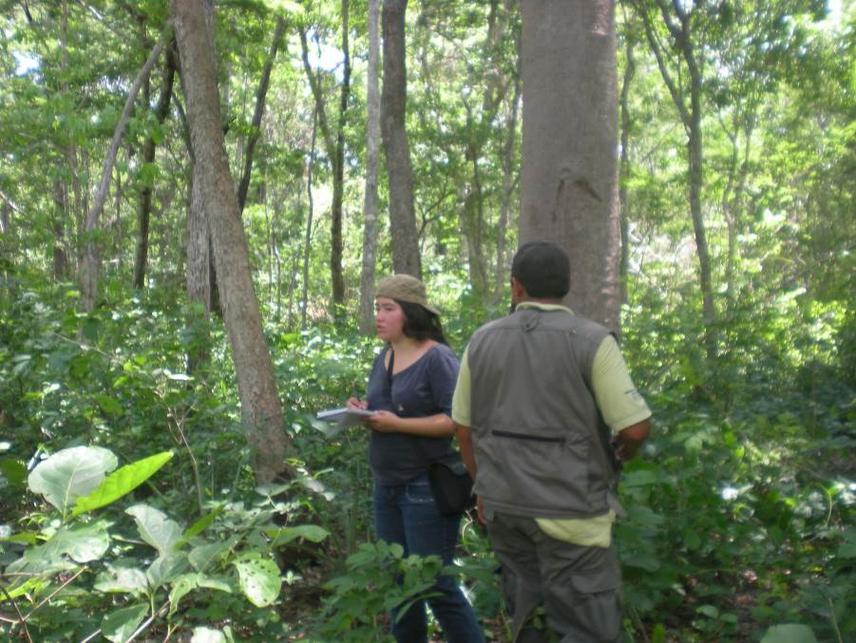Jesus Nazareno Pinto Ledezma
Other projects
15 Dec 2009
Testing a Habitat Model for the Hyacinth Macaw (Anodorhynchus hyacinthinus) and Mapping Habitat Suitability for the Species in Protected Areas in Bolivian Pantanal
The project aims to develop, enable and facilitate the implementation of an effective and sustainable conservation program for the Hyacinth macaw.
The endangered (EN) Hyacinth macaw (Anodorhynchus hyacinthinus) is the largest parrot of the world. In Bolivia occur in the East of the Santa Cruz department (Angel Sandoval Province, San Matías District) in the Pantanal Ecoregion. Although, previous studies before 2005 indicate that the specie also occur in other protected areas (PN-ANMI Otuquis and PN-ANMI Noel Kempff), recent field studies (conducted by JNPL, with the support of the Rufford Small Grants) do not registered the specie in these protected areas.

Maya Paredes and Miguel Eguez (Park ranger) taking data about the habitat of the Hyacinth macaw
Although there are no accurate censuses conducted in the past, there is a general agreement that this species sharply declined in recent decades due to the international trade of macaws and the loss and deterioration of its habitats in the Pantanal Ecoregion. Also, there are several gaps on the knowledge of the species that need to be filled to address effective conservation plans. Until we get an accurate number of the species population the actions of an effective conservation will continue difficult.
This project tries to achieve this issue and will address to contribute on the develop an adequate conservation strategy for the specie at national level. In this sense, the project aims to develop, enable and facilitate the implementation of an effective and sustainable conservation program for the Hyacinth macaw, which is focuses on integrating people, ecological research, education and outreach. On the other hand, we will use participatory methods to integrate scientific research and local communities’ views and practices on conservation to enable our research to be truly integrative.
Based on the previous, the contribution of this project is three-fold:
1) provide the necessary information (especially field data about population status of the species and the conservation status of its habitats), that will serve to develop an adequate conservation strategy for the Hyacinth macaw;
2) contribute with the training of local park rangers to improve their work in the IMNA San Matías, in aspects such as monthly monitoring of the protected area and its species; and
3) through the use of the Hyacinth macaw as flagship specie, contribute with the conservation of the Bolivian Pantanal.